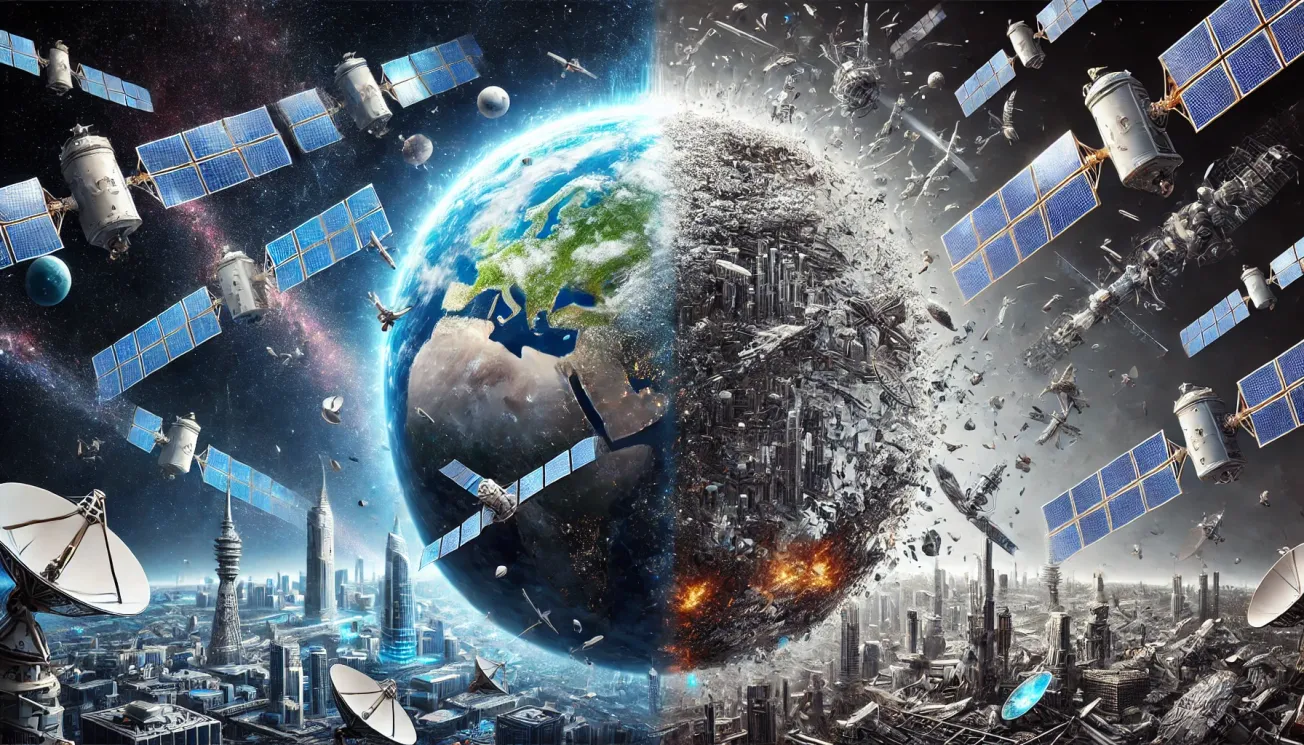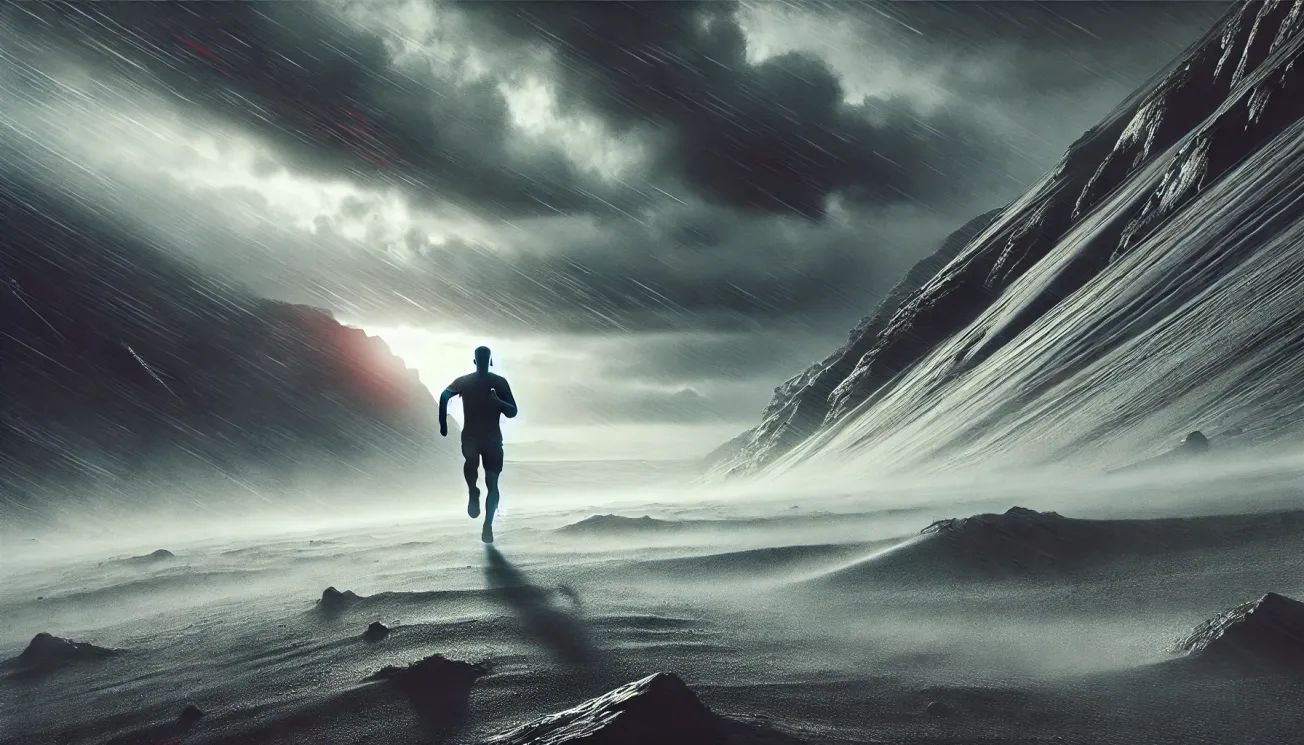The year is 2050.
A spacecraft carrying astronauts to a lunar colony suddenly receives a warning: debris from an old satellite is on a collision course. The onboard AI quickly calculates an evasive maneuver, narrowly avoiding a catastrophic impact that could have destroyed the mission.
This isn’t science fiction. It’s the reality we’re heading toward.
Today, thousands of satellites orbit Earth, powering the internet, GPS, global security, and communications. But in the next 30 years, that number will explode into the hundreds of thousands—with companies like SpaceX, Amazon, and China’s space program filling the sky with mega-constellations of satellites.
🚀 Will this future lead to global connectivity, unlimited data, and solar power beamed from space?
⚠️ Or will it spiral into chaos—overcrowded orbits, cyber wars, and an environmental disaster above our heads?
This article takes you on a journey from 2025 to 2050 to explore what’s coming next, who is shaping the future of satellites, and the crucial decisions we must make today to prevent disaster.
🌍 2025: The Sky is Already Filling Up
Right now, Earth’s orbit is busier than ever.
🛰 Total Satellites in Orbit: Over 8,500
📡 Active Satellites: About 6,000
♻️ Defunct, Inactive, or “Dead” Satellites: Over 2,500
🔄 Projected Satellite Launches by 2030: 40,000+
The reason for this explosion? A new space race—driven not by governments, but by corporations.
🚀 The Rise of Megaconstellations
The old days of big, bulky government satellites are over. Today’s space revolution is led by small, mass-produced satellites launched in the thousands to create massive global communication networks.
The biggest players include:
✅ SpaceX’s Starlink – Over 5,500 satellites already launched, aiming for 42,000 total.
✅ Amazon’s Project Kuiper – Planning 3,236 satellites to compete with Starlink.
✅ China’s GuoWang Constellation – Aiming for 13,000 satellites to dominate space internet.
✅ OneWeb, Telesat, and Others – Building smaller networks to compete.
📌 Why does this matter?
These mega-constellations promise:
✔️ High-speed internet everywhere—from cities to remote villages.
✔️ Better weather tracking and disaster response.
✔️ Stronger GPS & global surveillance systems.
But there’s a problem—Earth’s orbit isn’t infinite.
📌 Already, we’re seeing the first warning signs:
- More satellites = more risks of collisions.
- Governments aren’t keeping up with regulation.
- Space is becoming militarized—what happens when satellites start getting hacked or shot down?
🚀 In 2025, we’re at a turning point. The satellite boom is only beginning. But if we don’t plan ahead, we may create an uncontrollable mess.
🚀 2035: The Satellite Boom Hits Full Speed
It’s 2035, and Earth’s orbit is now a high-speed highway of satellites.
Mega-constellations from SpaceX, Amazon, and China have expanded dramatically, filling low-Earth orbit (LEO) with tens of thousands of satellites.
📡 Total Satellites in Orbit: 50,000+
🌎 Earth Now Has 100% Global Internet Coverage
🛰 More Satellites Launched in 10 Years Than in the Previous 60 Combined
For the first time in history, the entire planet is connected.
You can walk through the Amazon rainforest and stream a live video. Drones deliver medicine to remote villages in Africa. A self-driving car in rural Wyoming downloads new software updates instantly.
But with progress comes new problems.
🚦 The First Signs of Satellite Traffic Jams
By 2035, space traffic has become a serious issue.
❌ Satellites are moving dangerously close to each other.
❌ There have been hundreds of near-misses between rival constellations.
❌ Nations are clashing over orbital real estate.
📌 SpaceX vs. Amazon: The First Major Space Traffic Dispute
In 2032, Amazon’s Project Kuiper satellites nearly collided with SpaceX’s Starlink satellites.
- Both companies blamed each other.
- The FCC and UN had no clear authority to mediate.
- Ultimately, SpaceX moved Starlink out of the way—but at a financial loss.
This set a dangerous precedent: If companies own space, who enforces the rules?
🚀 AI to the Rescue?
By 2035, autonomous satellite traffic systems are being developed to prevent crashes:
✔️ AI-controlled orbital lanes automatically adjust satellite positions.
✔️ Predictive collision avoidance helps satellites “see” risks before they happen.
✔️ Machine learning makes space traffic management more efficient.
But there’s one problem AI can’t solve: politics.
⚠️ The First Space Governance Crisis
With thousands of satellites owned by private companies, governments start to push back.
📌 The Big Question: Who Owns Space?
In 2034, the UN attempted to pass The Space Traffic Act, a law that:
- Limited the number of satellites per company.
- Required mandatory AI-driven collision avoidance.
- Demanded orbital cleanup efforts.
🚀 Who Opposed It?
- SpaceX & Amazon: “Regulation will slow down innovation.”
- China & Russia: “No global body should dictate our orbital strategy.”
- The United States: Stuck in the middle, with NASA supporting regulations but the private sector resisting.
❌ The bill failed. SpaceX, China, and Amazon continued launching satellites at full speed.
📌 The stage was now set for 2050—when Earth’s orbit would become truly chaotic.
🌍 2050: Utopia or Orbital Disaster?
It's 2050, and Earth's orbit has become a complex, AI-controlled web of satellites.
📡 Total Satellites in Orbit: 100,000+
🌎 Global internet is now a basic human right.
🛰 AI traffic control prevents over 10,000 potential collisions daily.
Humanity has achieved something incredible—a fully connected planet, AI-managed orbital highways, and the first satellite-based solar power stations beaming energy to Earth.
But while many celebrate this new space age, others warn of an impending catastrophe.
🚦 Earth’s Orbit is Now Dangerously Overcrowded
Even with AI-controlled satellite traffic, space has never been more congested.
Every second:
✅ Over 1,000 satellites transmit live data.
✅ Dozens of satellites reposition themselves to avoid collisions.
✅ Governments, corporations, and military agencies monitor threats in orbit.
📌 The "Orbital Highways" System
- AI algorithms now control orbital lanes.
- Satellites operate in assigned traffic zones, like highways on Earth.
- Self-repairing satellites use autonomous drones to fix damaged units.
But despite these advancements, the risks keep growing.
🚀 Major Challenges in 2050:
⚠️ Too many satellites: Even AI struggles to keep up.
⚠️ Cybersecurity threats: AI-driven satellites are now prime hacking targets.
⚠️ International tensions: Nations are fighting for control of orbital zones.
And then there’s the biggest threat of all…
⚠️ The Kessler Syndrome Becomes a Real Possibility
For decades, scientists warned about the Kessler Syndrome—a chain reaction where one satellite collision causes a cascade of debris, setting off thousands of new collisions until Earth's orbit is a cloud of unstoppable wreckage.
In 2048, the world came dangerously close.
📌 The Near-Catastrophe of 2048:
🚀 A Chinese military satellite collided with an abandoned Russian satellite.
💥 The explosion created 1,500 new pieces of debris.
🛰 The debris field damaged 12 commercial satellites before AI traffic systems stopped the spread.
This triggered an emergency meeting at the UN, where world leaders debated:
❌ Should there be a ban on new satellite launches?
❌ Should all dead satellites be forcefully de-orbited?
❌ Should companies be fined for space debris?
No agreement was reached. The space race continued.
🌍 Two Possible Futures: Which One Will We Choose?
By 2050, the future of Earth’s orbit could go one of two ways…
🚀 Scenario 1: The High-Tech Utopia
✅ AI traffic control fully prevents collisions.
✅ Orbital clean-up drones remove space junk efficiently.
✅ Solar power satellites beam energy to Earth, solving energy shortages.
✅ AI-run autonomous repair stations keep satellites in perfect condition.
✅ Humanity successfully expands beyond Earth using this infrastructure.
🌟 Result: Earth’s orbit becomes a fully sustainable, self-regulating system.
⚠️ Scenario 2: The Orbital Nightmare
❌ Kessler Syndrome triggers a domino effect of destruction.
❌ Earth’s orbit becomes a chaotic minefield of debris.
❌ Space travel becomes nearly impossible.
❌ The global economy collapses as satellites are lost.
❌ Nations blame each other—leading to wars over remaining space resources.
🔥 Result: Humanity is locked out of space for generations.
📌 Right now, we stand at the crossroads.
🔮 What Needs to Happen Next?
🚀 How do we avoid orbital disaster?
🔹 Global satellite regulations need to be enforced.
🔹 Companies must be held accountable for their space debris.
🔹 AI traffic control must be perfected before space becomes unmanageable.
🔹 International cooperation is critical—or nations will fight for orbital dominance.
🚀 The Big Question:
Will Earth’s orbit become humanity’s greatest technological achievement—or our greatest failure?
What do you think? Are we heading toward a high-tech space utopia, or a disaster waiting to happen? Drop your thoughts below! 🚀🔥






